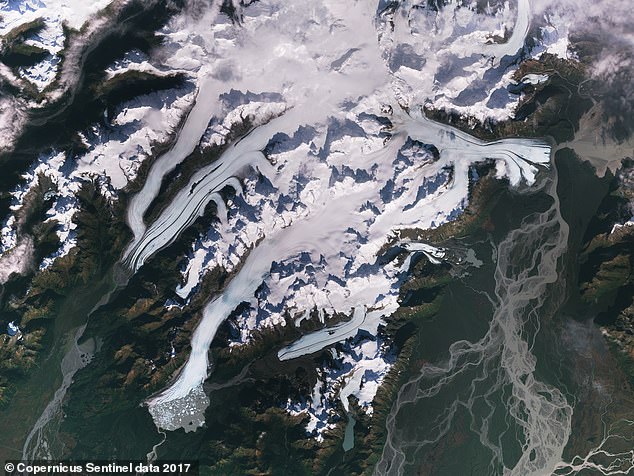
Global Glacier Melt Dumps 273 Billion Tonnes of Ice Annually Into Oceans, Study Warns
Melting Glaciers Accelerate Sea Level Rise, Threatening Coastal Regions
Melting glaciers are disappearing at alarming rates, releasing 273 billion tonnes of ice into oceans annually and driving faster sea level rise, a major study reveals. Glaciers in central Europe have shrunk by nearly 40%, far exceeding the global average loss of 5%. Since 2000, melting glaciers have contributed 0.7 inches (1.8 cm) to global sea levels—making them the second-largest contributor after ocean thermal expansion.
[Image: Satellite images of retreating Alaskan glaciers]
Satellite images show rapid ice loss in Alaska’s Scott, Sheridan, and Childs glaciers.
Led by the World Glacier Monitoring Service (WGMS), 35 international research teams analyzed 233 datasets, combining satellite observations and ground measurements. Glaciers, which covered 272,287 square miles (705,221 km²) in 2010, now lose 237 billion tonnes of ice yearly, raising sea levels by 0.03 inches (0.75 mm) annually. This exceeds ice loss from Greenland and Antarctica.
“Glacier mass loss will accelerate through 2100,” warns Dr. Samuel Nussbaumer of the University of Zurich. Alaska’s glaciers alone account for 25% of glacial sea-level contributions.
Projections and Regional Impacts
A Nanyang Technological University study predicts sea levels could rise by 6.2 feet (1.9 meters) by 2100 if CO₂ emissions remain unchecked, submerging coastal cities like London, Miami, and Bangladesh. Meanwhile, communities relying on glaciers for freshwater—such as Central Asia and the Andes—face acute water scarcity as glaciers retreat. Southern Andes glaciers have lost 12.8% of their mass since 2000, and Asia’s Himalayan glaciers 8.8%.
[Image: Map showing regions with severe glacier loss]
Central Europe and the Middle East have lost up to 40% of glacial ice since 2000.
Human and Ecological Consequences
Dr. Inés Dussaillant highlights glaciers’ role as “vital freshwater reservoirs,” crucial during dry seasons. Their loss threatens agriculture and drinking water for millions. Meanwhile, rising seas may intensify storm surges, endangering coastal ecosystems and infrastructure.
[Image: Satellite view of Franz Josef Land glaciers]
Blue-tinted glaciers in Franz Josef Land, Arctic Ocean, show reduced snow cover, signaling rapid melt.
A Grim Comparison
Professor Michael Zemp puts annual ice loss in stark terms: 273 billion tonnes equals 30 years of global freshwater consumption. Communities dependent on glacial meltwater, like those near Kyrgyzstan’s Golubin Glacier, face dwindling supplies.
[Image: Golubin Glacier in Kyrgyzstan]
Retreating glaciers like Golubin threaten water security in arid regions.
Call to Action
The study urges nations to use these findings as a baseline for climate policies. Dr. Stephen Plummer of the European Space Agency emphasizes the need for “effective mitigation strategies” to manage freshwater scarcity and coastal flooding.
As glaciers vanish faster than predicted, their irreversible loss underscores the urgent need to curb emissions and adapt to a changing planet.
Note: Image placeholders indicate key visuals to include, such as glacier retreat comparisons, regional maps, and freshwater-dependent landscapes.


